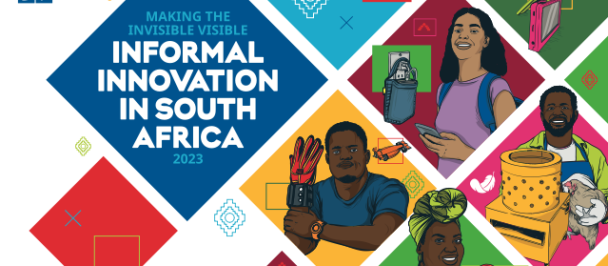How E-learning can be used to bridge the digital divide
Moving from Access to Accessibility: The Deception of the Digital Divide in Development
February 10, 2021
Pixbay.com
Much has been made about the digital divide and how it prevents societies from harnessing the full benefits that information and communication technologies (ICTs) can deliver. Equitable access to such technologies is seen as an enabler of socio-economic development as digitally connected living has potential implications for poverty alleviation, health, education, social well-being, and political participation. Overall, increasing access to enabling technologies appears as a solution to the disparities between social groups. Yet is this the correct approach? Will certain inequalities vanish as digital technology expands throughout the margins of society?
A Move away from Division
The digital divide is conceptualized as the gap between those that have access to ICTs and those that do not. To narrow the distance between the “haves” and the “have-nots”, it is generally accepted that spreading digital technology more broadly would solve these differences. Yet access does not equal accessibility. Simply providing the tools for taking part in a democratic society does not guarantee participation, nor the closing of the digital divide. Reducing the issue to technology and access - or even "haves" and "have-nots" - can be problematic as it does not pay enough attention to the social systems that must be considered for technology to make a change. This simplification also gives the false impression that inroads are being made in countries and their “connected” peoples.
The digital divide is not simply the absence of technology, it is a nested form of exclusion that depends on, and cannot be disentangled from, other damaging forms of social and economic inequalities. A prime example is the ‘poverty premium’ and how the poverty-stricken pay more for data than the wealthy. This ‘premium’ is charged in two ways. Firstly, prepaid data in South Africa costs significantly more than post-paid or contract data per megabyte. Secondly, the price of low-volume, small-value bundles - those typically purchased by the impoverished - are more expensive than the discounted high-volume packages usually bought by the affluent. Compounding this premium is the fact that, overall, South Africa has some of the most expensive data on the continent.
Pixabay.com
A Move Towards Inclusion
If technology is to be the equalizing platform for the historically disenfranchised, then digital inclusion should be the priority. Digital inclusion brings together high-speed internet access, information technologies, and digital literacy in ways that promote success for communities and individuals trying to navigate and participate in the digital world. To foster such inclusion, comprehensive approaches must be taken to ensure that not only equitable access, but universal accessibility is afforded to all. An area where such accessibility is essential is in education where learning opportunities are dependent on socio-economic circumstances. A way to overcome the educational inequalities is through the adoption of E-learning.
E-Learning represents a potentially equalizing strategy for disadvantaged South African youth, as new technologies promise to reduce the socio-economic barriers that limit their access to the educational opportunities necessary to create sustainable livelihoods. E-learning reduces the cost of education through economies of scale and by the fact that the use of Internet can reach a wider population with the same fixed costs. It makes learning available anywhere and anytime, allowing learners to participate in educational activities without the restrictions of time and place. Yet many public schools, already marginalised in terms of education opportunities and infrastructure, are at risk being left further behind and even excluded from key aspects of the learning experience.
An Educated Move
In response to this opportunity, UNDP South Africa in partnership with Google NBU and local organizations is running a pilot programme in select disadvantaged secondary schools in the Western Cape to deliver inclusive E-Learning. Adopting a comprehensive approach, the pilot attempts to bring together high-speed internet access, information learning technologies, and digital literacy in ways that promote success for students and teachers in trying to participate in the virtual realm and beyond. Outside the digital classroom, the project also aims to assist in overcoming certain socio-economic disadvantages that students face.
Schools will be provided with free connectivity and data through partnership with a local Internet service provider, ThinkWifi (formerly a Google Station), that distributes free Wi-Fi. Once connected, schools will be equipped with Google’s G-Suite for Education platform at a subsidized cost. G-Suite for Education provides a suite of cloud-based educational offerings and tools that can be integrated into any curriculum. To ensure these tools are best utilized, comprehensive teacher training will be undertaken by an authorised Google Education Partner, Opennetworks, that will not only assist in the training of teachers but also provide schools with a Cloud-based hosting service and online monitoring dashboard. To secure student participation, UNDP has partnered with Cape Town-based Non-Profit Organization, RLabs, who have developed a digital rewards system called Zlto (pronounced “Zlato”) that is aimed at reducing barriers youth face such as work experience, the cost of work seeking, and access to credible networks by rewarding them for “doing good”.
Developed by youth, Zlto (Google Impact Challenge winner 2018) is an online platform where youth can earn digital rewards by doing deeds and micro jobs in their communities. Students may be able to earn digital rewards by assisting their peers in using Google’s suite of educational tools, or even expand beyond schools and assume tasks that benefits surrounding communities. These rewards can be exchanged with goods and services from a variety of local vendors such as hairdressers, barbers, medical doctors, as well as national retail partners.
This incentive not only increases engagement with E-learning and offers economic opportunities, it drives positive behaviours of students, increases self-confidence, and develops their social capital through meaningful community work. The growth of their social networks can lead to alternative channels for employment or economic opportunities post-school
A Move towards the Future
Accessing digital technologies and the internet is different from accessing the content that nests on them. People may be connected but still be excluded politically, economically, and socially if they do not attain the ability and the skills to use them. Because of this, there is seldom just one reason for digital exclusion and no single approach to solving it. Yes, Information and Communications Technologies should be distributed widely and without restriction, but success in the increasingly digitized social and economic realms requires a comprehensive approach to fostering inclusion. Digital inclusion requires intentional strategies and investments to reduce and eliminate historical, institutional, and structural barriers to access and use technology to its fullest potential. Only through such approaches will the elimination of the “have-nots” occur, and the conditions set where all have the capacity to fully participate in society, democracy, and the economy.
For no one to be left behind, digital inclusion must be the goal.

 Locations
Locations




